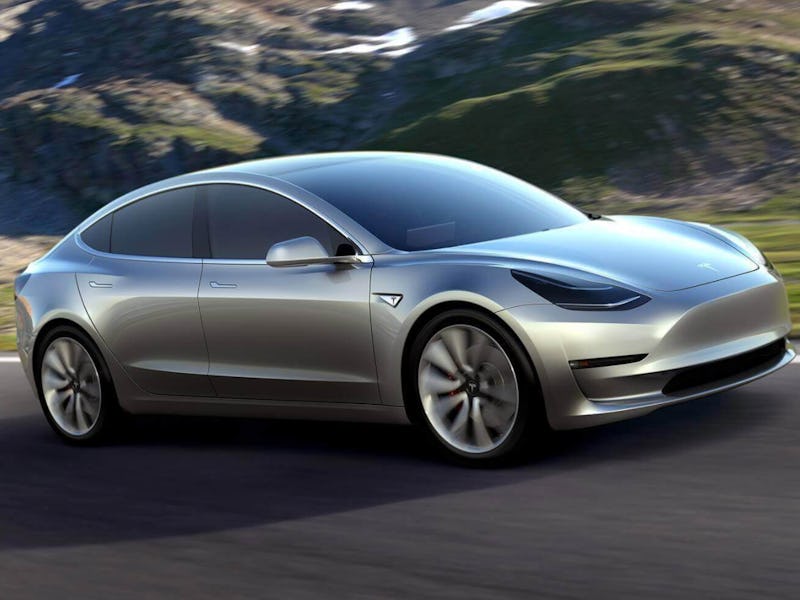Tesla’s Model 3 may be set to enter production in just three months’ time, but there are still new details trickling out by the day. On Tuesday, an eagle-eyed fan spotted a release candidate Model 3 near the company’s Palo Alto headquarters. It seems the vehicle may pack more sensors than previously suggested, adding to one analyst’s report that the car could feature a more advanced Autopilot system.
As Electrek noted, the Model 3 is expected to feature the same Autopilot sensors as the Model S and Model X. The current models are built on a Hardware 2 platform designed to support autonomous driving in future, with a software update set to enable the feature by the end of this year.
The platform includes eight cameras: three facing forwards, two in the B-pillar between the front and rear doors, two in the front fenders, and one in the rear by the hatch latch. There are also radar and ultrasonic sensors to provide the computer with more contextual data.
But in the Model 3 sighted Tuesday, it appears there are two extra sensors located by the C-pillars between the rear door and back:
It’s possible that these sensors won’t make the final cut, but what’s interesting is Tesla has been firm that current cars will support full self-driving capabilities with no added sensors required. The Model 3 is also not intended as a more advanced car: it’s a smaller, more affordable version of the Model X. Musk compared the difference to that of the BMW 3 series versus a BMW 5 series.
But not everyone agrees. Adam Jonas, automotive analyst at Morgan Stanley, thinks the company could be underselling the Model 3 to avoid eating up demand for older models. Jones told CNBC on Monday that he thought the Model 3 could have at least 19 sensors, powered by a computer 40 times more powerful than the original Mobileye-powered version. The current Model S and X machines, Jonas claims, lack this hardware.
Musk has said repeatedly that the Model 3 is designed with autonomous driving in mind. For example, the dashboard lacks a speedometer on the driver’s side, as Musk said the information is less relevant with autonomy. Instead, the speedometer will fade in and out of opacity on the central control screen.
The Model S and X both feature a secondary screen that displays current speed and other vital information, even though these two cars are also meant to receive the autonomous driving update. With this in mind, and these new sensors, it’s possible Tesla has something special in store for the Model 3’s autonomous features after all.
